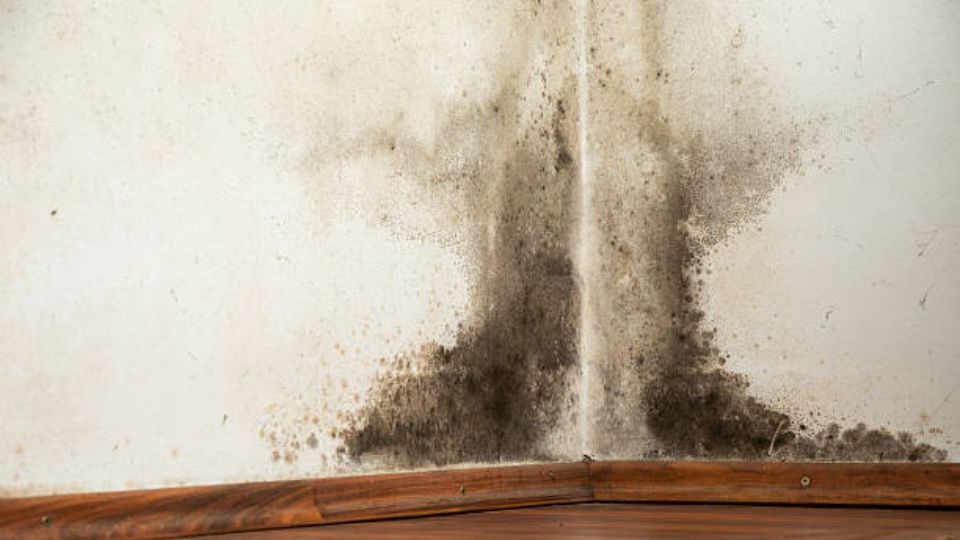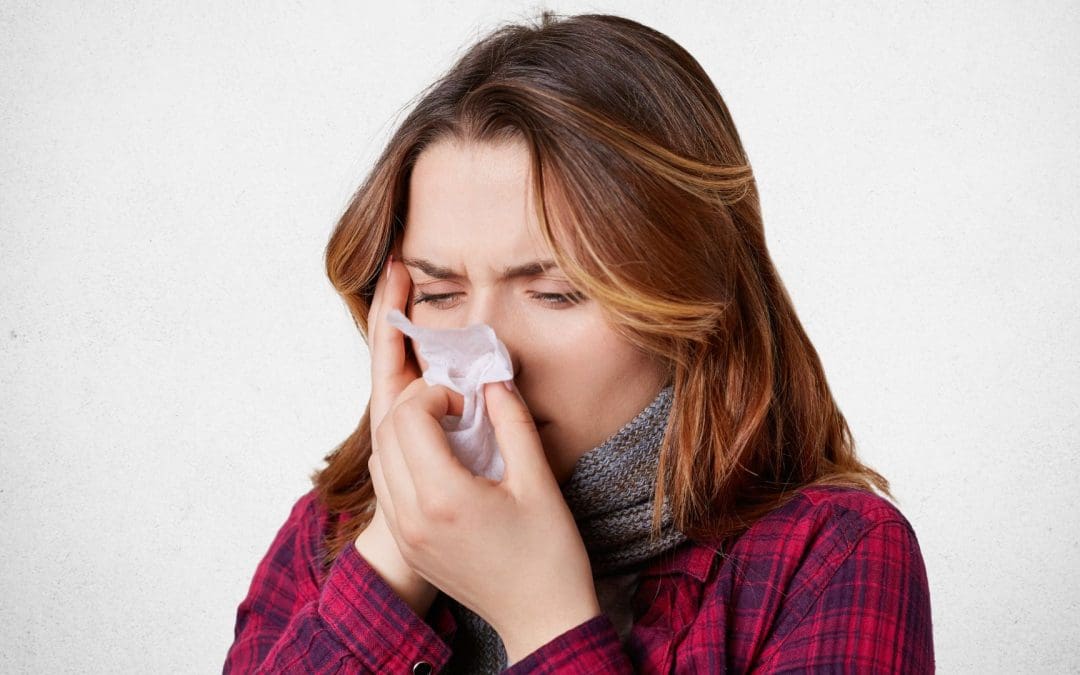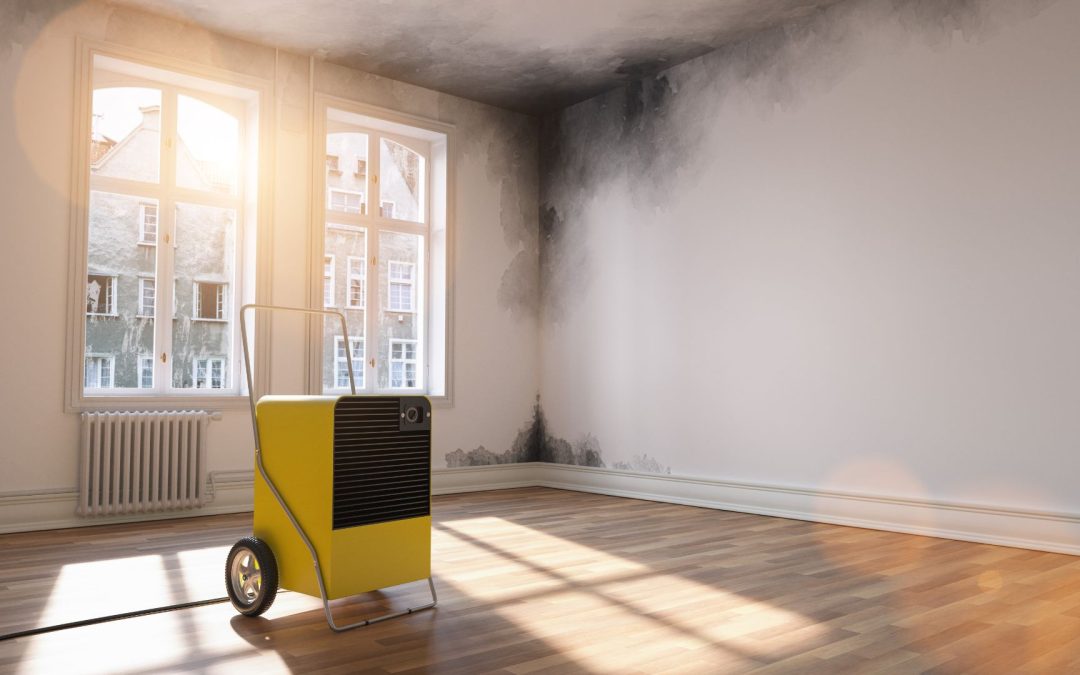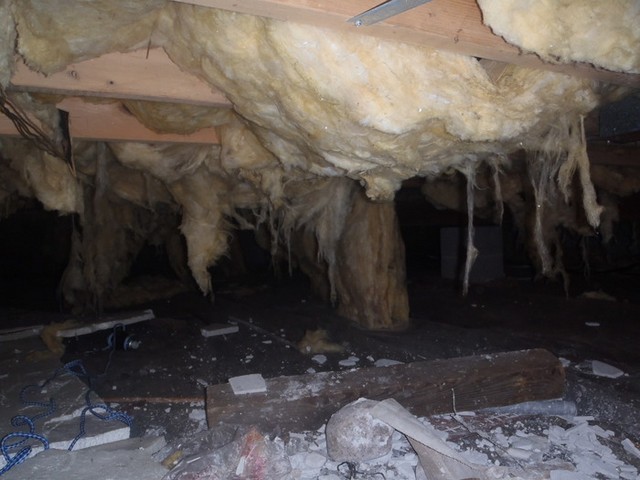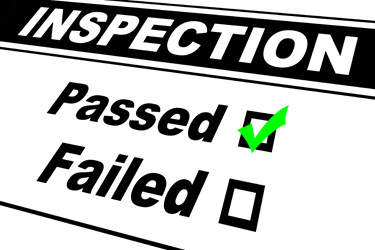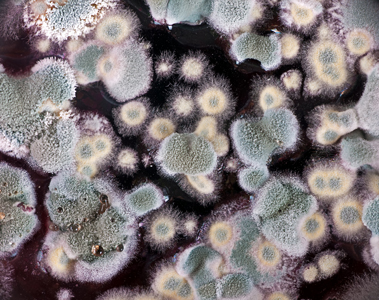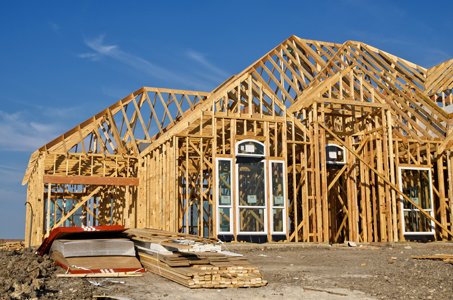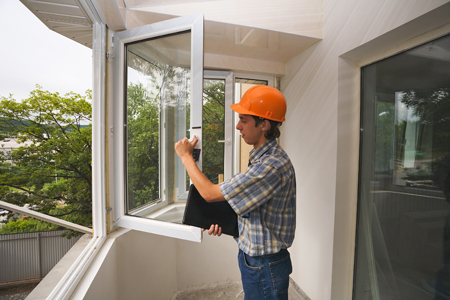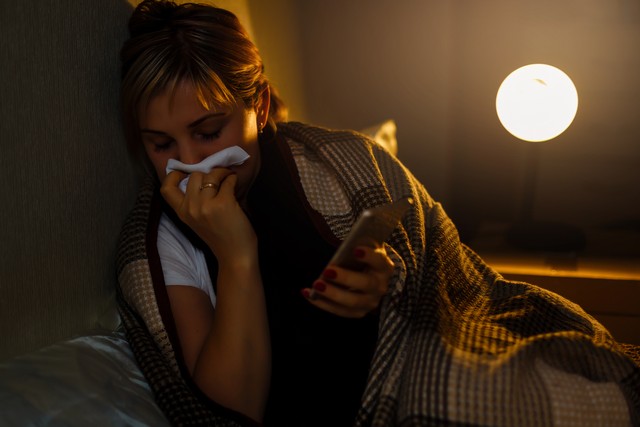
by Mold-B-Gone | Nov 15, 2022 | Black Mold, Mold and Infants, Mold Inspection
Mold can be a severe problem in homes and businesses. Not only is the mold unsightly, but it can cause health problems for people who breathe in the spores.
One of the dangerous types of mold is black mold. Also professionally known as Stachybotrys chartarum, black mold produces mycotoxins, which can cause serious health issues.
Black mold grows in damp, humid environments and can appear as greenish-black or black spots.
Read more: What Causes Black Mold?
It’s essential to understand how fast black mold grows on concrete and other surfaces so that you take the necessary steps to prevent it from taking hold in your home or business. Black mold usually starts growing in ideal conditions in 24 to 48 hours. We will also discuss health issues with black mold and factors that influence mold growth in your home or business.
What Are the Health Issues With Black Mold?
Black mold, known as Stachybotrys chartarum or Stachybotrys atra, is a fungus that can cause serious health issues if left untreated. These include:
- Respiratory problems, including coughing and sneezing, asthma attacks, and chronic sinus infections.
- Eye irritation, such as burning eyes or watery eyes.
- Skin problems, with redness and itching being the most common symptoms.
- Various neurological issues, such as headaches and fatigue.
- In extreme cases, black mold can cause nausea and vomiting.
Patients with weakened immune systems, as well as infants, children, and older adults, are especially vulnerable to its effects.
Factors That Affect How Fast Black Mold Grows
Mold only needs a few essential components to grow and thrive: moisture, warmth, food source, and oxygen. Here are the factors that can affect how quickly black mold grows:
Humidity:
Mold will grow faster in moist, humid environments. High relative humidity (RH) means more moisture is available for the mold to feed off, causing it to grow faster. Places like bathrooms and basements are typically more humid, making them ideal environments for mold growth.
Temperature:
Warm temperatures help black mold reproduce quickly. The warmer the environment, the faster it will grow. Locations with higher temperatures, such as attics, will experience faster mold growth than rooms with lower temperatures.
Food Source:
Different molds require different food sources to survive. Black mold grows on organic materials like wood and paper high in cellulose. To grow faster, it needs a consistent source of these materials.
Oxygen:
Mold needs oxygen to survive and reproduce. Without it, the mold won’t be able to grow. Black mold can also reproduce anaerobically (without oxygen) in small amounts, substantially slowing its growth.
What Should You Do While Waiting for Mold Remediation Services?
If you have noticed telltale signs of black mold in your homes, such as discoloration, musty smells, and even health issues, you may:
a) Seal off the area until a mold remediation service arrives
b) Contact your insurer and file a claim
c) Increase ventilation in the affected rooms to reduce moisture levels
d) Clean up any remaining water or spills and all porous materials (like carpeting and drywall).
Contact Mold-B-Gone for expert mold inspection in Atlanta. We have a team of certified professionals available to answer any questions about mold growth, particularly black mold.

by Mold-B-Gone | Oct 19, 2022 | Basement Mold, Mold and Infants, Mold Inspection
Mold can be a severe issue. It can cause health problems and damage to your property.
Basements are the perfect breeding ground for mold. The combination of darkness, moisture, and lack of ventilation creates the perfect environment for mold to grow.
Mold produces allergens that can cause respiratory problems, skin irritation, and other health issues. In some cases, mold can even produce toxins that can harm your health.
Hence, it is essential to call mold remediation for your basement as soon as you see any signs of mold.
Read more: Health Benefits of Mold Remediation
Experts will take care of the problem quickly and efficiently to ensure your home’s safety and integrity.
We will explain what causes mold, its health risks, and how our mold remediation services can help you get rid of it for good.
What Are the Causes of Mold Growth in Basements?
1) Poor ventilation – Moisture-laden air can condense on cold surfaces, leading to mold growth.
2) Water leaks – Leaks from pipes, foundation cracks, or other sources can introduce moisture into the basement, promoting mold growth.
3) Flooding – Basements are susceptible to flooding, leading to mold problems.
What Are the Health Effects of Mold?
1) Mold can cause nasal stuffiness, throat irritation, coughing, or wheezing.
2) People with asthma or who are allergic to mold may have more intense reactions.
3) Mold exposure can lead to inflammation of the airways and lungs.
4) Mold exposure is linked to neurological conditions and illnesses, including memory loss and depression.
How To Identify the Different Types of Mold?
1) Black Mold
These fungi are commonly found in bathrooms, kitchens, and basements. They thrive in places with high humidity or water leaks. They are also mildew and can cause many respiratory problems if inhaled.
2) White Mold
This type of mold is often found in food like bread, cheese, and fruits. It can cause nausea, vomiting, and diarrhea if ingested.
3) Toxic Mold
This is the most dangerous type of mold as it can release mycotoxins into the air, which can be inhaled and cause serious health problems.
How Do Experts Help With Mold Removal from Basements?
1. Identify the Location and Extent of Mold Growth
This will help determine the best way to remove the mold.
2. Contain the Mold
Containing will prevent it from spreading to other areas of your home. This can be done by establishing a physical barrier, such as using negative pressure to keep mold spores from traveling through the air or using natural barriers like plants.
3. Eliminate the Source of Moisture
Mold needs water to grow, so eliminating the source of moisture is essential to preventing it from returning. This can be done by fixing leaks, increasing ventilation, or using a dehumidifier.
4. Remove the Mold
Once the mold has been contained and the source of moisture eliminated, the mold can be removed. This can be done through cleaning, sanding, and HEPA vacuuming.
5. Clean the Affected Area
After removing the mold, the area should be cleaned with soap and water. Any porous materials that have been affected by mold should be thrown away.
If you are searching for a mold specialist in Atlanta, contact Mold B Gone. We will come to your home and inspect for mold. Our process is simple: we find the mold, we kill the mold, and we remove the mold. We also offer a warranty on all of our work.

by Mold-B-Gone | Oct 4, 2022 | Mold and Infants, Mold Inspection
23-year-old Juliana, from New South Wales, Australia, had to be evicted from her home after authorities condemned it. The cause? A rampant mold infestation caused by a year of damp, wet weather.
“It’s really disgusting,” she told to NCA NewsWire. “It started out just in the corners of our bedrooms and living area, but at this point it’s taken over most of the walls and roofing spaces. Even after multiple attempts to remove it, it keeps growing back thicker and in new spots.”
Juliana and her two roommates were all affected. The mold spread to their personal belongings and may be the cause of a mysterious illness.
“Both of my roommates have been sick for the past six months with no explanation – a constant cough and runny nose,” Juliana said. “We’re pretty certain this is from the mold growing in their bedrooms.”
Even though they tried to deal with it themselves, the constant rain and damp weather created the perfect conditions for the mold to re-emerge. Their landlord stepped in to try and deal with the problem, but it was to no avail.
Ultimately, the three housemates had to leave the home because it was condemned.
She’s not the only one that has been dealing with mold. People living in places like Georgia, with humid climates and damp winters, are at increased risk of mold in their homes.
What Are The Signs of Mold In My Home?
Mold development can be concealed. Mold may develop behind walls or above ceiling tiles. Therefore, inspecting for mold in any wet area is critical, especially if water damage has occurred.
Begin by performing a visual survey of your home. Look for stains or discoloration on floors, walls, window panes, ceiling tiles, textiles, and carpets that indicate mold or excessive moisture. Examine the area for evident leaks, dampness, floods, or a musty stench. If you detect anything strange, take immediate action!
How Can I Remove Mold From My Home?
Do not attempt to remove mold yourself. Although mold seems simple to kill, it is not simple to eliminate. One mold spore can spawn a huge infestation quickly. Many landlords and homeowners are tempted to remove mold by themselves to save on costs. However, the risk is much greater than the initial cost of mold remediation and is seldom done correctly. If the mold gets out of control, you might need to have your home demolished like Juliana’s home was.
We recommend hiring the most trusted professional in your area. If you’re in or around Atlanta, Mold-B-Gone is an excellent choice.
Mold-B-Gone: Atlanta’s Mold Remediation Experts
Our highly skilled team of certified mold removal experts specializes in whole-house cleaning. We have done mold removal services for thousands of homes and companies in Atlanta over the years and never failed a test on any house or commercial structure. Since we opened our doors, we have had a 100% rating for our mold cleaning service in Atlanta. Give us a call at (470) 545-4467 today!

by Eric Brown | Apr 11, 2019 | black mold removal Atlanta, black mold removal Georgia, Crawl Space Vapor Barrier, Crawlspace Mold, Health, Homeowner Tips, Indoor Air Quality, Mold Information, Mold Inspection, Mold Remediation, Mold Removal, Mold Removal Alpharetta GA, Mold Removal Atlanta GA
Got Mold In Your Crawlspace?
Here Are The Top 3 Reasons Mold Grows!
Crawlspaces are the ideal environment for mold to thrive.
Most crawlspaces are dark, dirty, and humid. Bugs like to live in there. They’re vented to the outside air in the summer (and in the winter if you neglect to close your vents) which can be very humid and this defeats the purpose of venting.
Mold is a fungus that requires moisture and high humidity to grow and thrive.
Like plants, mold has cells. However, unlike a plant that has chlorophyll and able to makes it’s food through photosynthesis, mold can not feed without moisture.
Mold reproduces by releasing it’s spores, this is mold’s survival mechanism.
In addition to moisture, mold also requires the right temperature of 41 degrees fahrenheit up to 100 degrees fahrenheit, common in Atlanta, Georgia and the South.
The final ingredient mold needs to thrive is food: high cellulose materials such as paper and wood, drywall, wallpaper, carpet, ceiling tiles, dust, and dirt.
If you want to know more about mold, then read: 10 Facts About Mold.
Now that you understand why mold grows in your crawlspace, the remainder of this article will list and explain the top three reasons why you have moisture in your crawlspace and what you can do to fix the humidity issues.
How To Measure The Relative Humidity Of Your Crawlspace!
The easiest way to determine the relative humidity of your crawlspace is to use a hygrometer or you could install a digital thermo-hygrometer with a remote sensor to track it.
If the relative humidity is greater than 50% this could cause moisture issues that leads to mold.
Mold will begin to grow at 50%, and will thrive when the humidity is greater than 70%.
The key to ensuring that your crawlspace does not become a source of mold is to figure out how to control the humidity.
Listed below are the top three reasons your crawlspace has high humidity.
#1 Water Accumulation!
If your crawlspace has standing water, you probably have a drainage problem or a plumbing leak. This needs to be fixed immediately.
You do not want water to accumulate in your crawlspace because this will compound your potential mold problems, not to mention as mold grows it will impact the indoor air quality of your home and health.
#2 Moisture Evaporating From The Ground!
When homes are built with crawl spaces, most builders neglect to cover the ground, meaning that the crawlspace is covered with dirt.
Dirt has moisture and as the moisture evaporates, it will increase the humidity in your crawlspace.
Unfortunately, this is a common problem in Atlanta, Georgia, and other southern states. To prevent moisture from evaporating from the ground, the easiest solution is to cover it up with a vapor barrier during crawlspace encapsulation.
#3 Outdoor Air Coming In Through The Crawlspace Vents!
The third reason your crawlspace could have moisture issues is through the vents.
When you bring outdoor air into the crawlspace, the relative humidity can increase.
Cool air cannot hold as much moisture as warm air, so the air that enters is now closer to its saturation point, referred to as the dew point.
It might be 60% relative humidity outside, relative to a temperature of 90 degrees fahrenheit, but when that air enters the crawlspace and cools down to 75 degrees fahrenheit, the relative humidity jumps up to 95%.
In the past, we were told that crawlspaces needed to be ventilated. Now, however, we are learning that crawlspaces need to be treated almost as if they were living spaces.
Fixing Your Crawlspace Humidity and Mold Problems
If your crawlspace is vented and the relative humidity is high, you need to fix the problems. It is not as simple as installing a dehumidifier either.
If you have water accumulation, the source of the water must be addressed. If it is a plumbing issue, fix the leak. If the problem is caused by drainage, this must be fixed as well.
If the problem relates to moisture evaporating from the ground or outdoor air coming into your vents, this can be fixed with crawlspace encapsulation in Atlanta, GA.
Mold-B-Gone Remediation, LLC specializes in drying out damp crawlspaces and turning them into dry, healthy foundations for your home.
Our dry-space crawlspace system includes the following:
- Thorough cleaning of the crawlspace, including mold removal and prevention.
- Installation of a wall-to-wall guide, durable, 14 mil vapor barrier.
- Attachment of the vapor barrier over ground and up sidewalls to 6 inches below floor joists.
“The end result is an energy-efficient, healthy home.
To know more about crawlspace, read our blogs: Is Your Crawl Space Contaminating Your Indoor Air?, Why Do Crawl Spaces Need A Vapor Barrier?
Got Crawlspace Mold Questions?
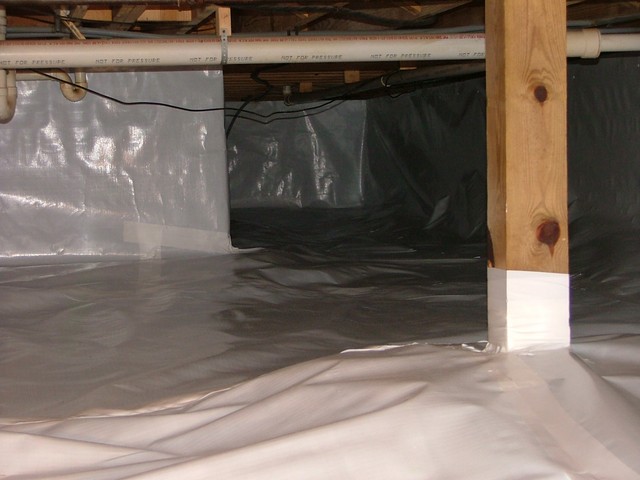
Got Crawlspace Mold Questions?
If you are concerned about humidity in your crawlspace and/or mold issues, call 470-545-4467 or send us an e-mail. We look forward to serving you! 🙂

by Eric Brown | Mar 14, 2019 | Beware Of Mold When Buying A Home, black mold removal Atlanta, black mold removal Georgia, Health, Homeowner Tips, Indoor Air Quality, Mold Facts, Mold Information, Mold Inspection, Mold Remediation, Mold Removal, Mold Removal Alpharetta GA, Mold Removal Atlanta GA
Are You Buying or Selling A Moldy Home?

Are You Buying or Selling A Moldy Home?
It’s that time of year when the real estate market begins heating up in Atlanta, Georgia. More houses on the market to fill the need of anxious home buyers.
Many homes built since the 1970s are showing signs of mold growth because of the oil crisis that occurred. This event encouraged home builders to make the homes more air-tight, meaning there were less drafts that brought outdoor air into the home.
This trend to energy efficiency has led to mold problems because mold needs water and moisture to thrive and the air-tight environments trap moisture in.
The upside is energy efficiency has saved you costs on utilities.
The downside, indoor air quality has suffered because of mold growth! This has led to higher incidences of mold related illness and reduced home values because mold literally feeds on the home, impacting its structural integrity.
The major problem with mold is that it can be hidden. You could have mold in your home and not even know that you have it. Sometimes the only clue that you have mold is family members may be getting sick more often. The problem with hidden mold is the mold spores are not visible and because of modern day HVAC systems, the air borne spores will continue to be circulated in your home, thereby spreading the spores in every room of your home.
As a home seller or home buyer, you need to be aware of the potential concerns caused by mold. Consult with your Real Estate Agent and ask them to call Mold B Gone, 470-545-4467; for a limited time we are offering mold inspections.
If you are selling your home and know that you have mold, had past water leaks that have been fixed and/or experienced a major water event like a flood or sewage backup, you should disclose this information to the realtor listing your home to avoid potential litigation.
In a perfect world, the home seller will disclose this information, but let’s face it, we are not living in a perfect world.
When a home seller wants to sell their home, their objective is to list the property and get the highest price for their home. This is the reason they get the help of a realtor.
The only way home buyers can protect themselves is to take matters into their own hands and make sure that the home they are buying does not have mold or moisture concerns that could lead to mold.
Most home buyers rely on the expertise of their home inspector, but as this article explains, can you really just rely on the opinion of your home inspector? Are they experts in mold? Most home inspectors are not and they rely on the goodwill of referrals from realtors, so there could be an inherent conflict of interest.
This article explains why you should submit an offer to purchase, subject to a home inspection AND a mold inspection. It also reveals the top 3 reasons to have a mold inspection before buying a home.
What Is Mold?

What Is Mold?
A fungus, some molds are visible, in various colors–black, white, green, gray–and will likely give off a smell.
Mold is nature’s recycler. It is everywhere because it has an important purpose in our eco-system: to breakdown and eat dead organic matter.
Mold needs three important ingredients to grow.
First, a food source, dead organic material like wood, paper, carpet, etc.
Second, the ideal temperature of 41 degrees fahrenheit up to 100 degrees fahrenheit.
Third, and most importantly, moisture. Without moisture, mold will not grow.
Why Is Mold A Problem?
Aside from the structural and health concerns (asthma and chronic sinusitis for example) that mold poses, the other major concern is that mold is often out of sight and difficult to see.
Common reasons and areas of the home that mold can be found include:
- Around leaking pipes, windows, or roofs. Water provides mold spores the moisture they need to grow.
- Basements or other areas of the home that have flooded and were not dried properly.
- Common with new construction is the practice of tightly sealing the building, which can trap moisture leading to mold growth.
- Poorly ventilated homes that does not enable outside air to circulate in the home.
Some other clues that there could be mold in the home include the following:
- Water stains on the walls and ceilings.
- Musty odors in areas of the home like the bathroom, kitchen, laundry room, and basement, where leaky pipes are commonly found.
- Standing water in the basement.
Be particularly careful if you are looking at purchasing a foreclosed home. These homes are susceptible to mold growth because cost saving measures by the banks usually means they will shut down the HVAC system, which is a major concern because it results in high humidity levels and ultimately mold growth.
Recently renovated homes are another concern because improperly trained contractors or the home seller could have found mold, but not addressed it properly.
A Brand New Home Could Have Mold!

A Brand New Home Could Have Mold!
If you are buying a new home, you may think that mold will not be an issue either. New does not necessarily mean mold for several reasons:
- The trend towards building energy efficient homes may save money on heating and cooling. The negative, however, is that by building homes so that they are air tight could result in a lack of proper ventilation, leading to mold growth.
- Simple construction errors like installing the vapor barrier when there is moisture present. This error will lead to mold growth because the moisture is trapped.
- The time of year the home was built could also be a factor. If the home was built when there was lots of rain and the foundation was not allowed to completely dry before installing the insulation and vapor barrier, then moisture could be trapped behind the walls.
- Cost saving construction measures is another factor. Home builders are using more Orient Strand Board (OSB) and less plywood and timber which provided some resistance to mold because these materials are semi-porous. In contrast, OSB and particle board are porous and susceptible to mold growth.
Top 3 Reasons To Have a Mold Inspection Before Buying a Home
Aside from the peace of mind that mold inspection offers, here are the top three reasons why you should consider a mold inspection when you buy a home:
- Mold Remediation Can Be Costly!
- Real Estate Agents Are Not Mold Experts!
- Home Inspectors Are Not Mold Experts!
#1 Mold Remediation Can Be Costly!

#1 Mold Remediation Can Be Costly!
As stated in an earlier article, the cost of mold remediation will depend on three key factors:
1. How much of the area is infected with mold?
2. What kind of materials are infected?
3. How easy is it to access the mold?
On average, the typical household mold removal project will range from $2,000 to $6,000, but can be as high as $30,000 or more depending on the extent of contamination.
Considering the potential cost of mold removal, you are much better off finding out if there is a potential mold problem before purchasing the home. A mold inspection will provide you with the data you require to make an informed decision.
Best case scenario, no mold is found. Worst case scenario, mold is found, but then if you still have your heart set on the home, at least you now have some negotiating power to bring down the price so the home can be properly remediated before you move in.
#2 Real Estate Agents Are Not Mold Experts!

#2 Real Estate Agents Are Not Mold Experts!
The goal of every real estate professional is to list and sell homes. They will only make their commission when the property sells, so they have significant motivation to do what it takes to facilitate the sale. Their end goal is pretty defined: sell the home and collect the commission.
In addition, real estate agents are sales and marketing professionals, they are not construction experts and likely know very little about mold, where it could be found, and why it is a problem.
When listing a home, the agent is relying on the honesty and integrity of the seller who fills in a property disclosure form. If the seller fails to disclose a mold problem that has not been fixed and is trying to hide the mold problem by painting over it or trying to hide it, how is the agent going to know. How will you know?
Buyers should pay close attention to the property disclosure form because it could provide you with clues of potential moisture problems that could cause mold. Some clues include YES answers to these types of questions:
- Is the property in a flood hazard area or an inland wetlands area?
- Does the home have basement water, seepage, or dampness issues?
- Has the home had roof leaks?
- Does the home have any rot and water damage problems?
- Does the home have any water drainage problems?
- Does the home have any sump pump problems?
#3 Home Inspectors Are Not Mold Experts!

#3 Home Inspectors Are Not Mold Experts!
Mold sickness is considered a hidden epidemic for two key reasons. First, most physicians are not trained to identify or treat mold illness. Second, most homes have mold, but the owners do not realize they have mold because it is hidden.
Since some people get sick from mold and other’s do not, a family could have been living in a moldy home and never experienced any major health concerns. In short, a seller of a home could have mold and not know because mold can be hidden underneath carpet, a new paint job, baseboards, behind walls, above ceiling, etc.
Taking this into consideration, when you hire a home inspector, their primary concern is not to identify if the home has mold. Rather, they are inspecting the overall structural integrity of the home, the roof, wiring, bathrooms, plumbing, etc.
A home inspector may point out water stains or moisture concerns in areas of the home, advise you that your basement has an odor, identify water seepage or a leaky roof, but they will not tell you if you have mold, what type of mold you have, and how extensive the mold problem is.
As a final note, like many business owners, home inspectors rely on referrals. Not surprisingly, one of the biggest sources of referrals tends to be real estate agents, whose primary objective is to sell property. Mold concerns present challenges to home sellers and their agents. Could there be a potential conflict of interest?
Mold Inspections Are Important!
The process of buying a home is an exciting process. You have big plans for your new home! You are looking forward to the future in your dream home to raise your family.
But in all the excitement, many home buyers forget about the future problems that mold and past moisture issues could have caused. This fact is ignored because many home buyers think a home inspection is a enough to protect them from future and costly repair problems. This is the #1 mistake home buyers make; home inspectors are not mold experts!
The worst case scenario is you move your family and all your possessions into your new home and eventually discover mold. Now what? You can ignore the problem which could cause future health and structural concerns for your property or you make the financial decision to deal with your mold problem.
Both options can be costly. Ignoring the problem will reduce your property value as the mold eats away at your home, not to mention the potential health issues. Addressing the mold concern can also be costly because proper remediation needs to be done by professionals.
Likely, the last concern you have when you are purchasing a home is the potential problems that mold could cause. Once you find your dream home, you want to submit your offer and close the deal.
However, I caution against being too hasty. In addition to hiring a reputable home inspector, seriously consider the services of a mold inspector.
Mold inspectors are trained to not only identify the moisture issue causing the mold but will also provide you with information on what type of mold is growing in your home and how extensive the problem is.
As mentioned earlier, the best case scenario is that no mold is found in your home.
However, if the mold inspector does find a mold problem it is better to be aware of the problem so that you can adjust your offer, subject to mold removal by the seller along with proper clearance letters. If the seller does not want to cover the cost of the removal, then at least you can factor in the cost of the mold removal into the purchase price.
Bottom line, it is better to be safe and informed, then sorry. The relative cost of a mold inspection is minor compared to the overall investment into the home and the potential costly headaches you will face if you have to pay for mold removal in the future.
As mentioned earlier in this article, consult with your Real Estate Agent and ask them to call Mold B Gone, 470-545-4467; for a limited time we are offering mold inspections.
Got Mold Questions?
We are mold inspection, detection, and removal experts. Call us, 470-545-4467, or contact us via e-mail. We look forward to serving you! 🙂

by Eric Brown | Jan 31, 2019 | 37 Symptoms Associated With Mold Illness, Attic Mold, Basement Mold, black mold removal Atlanta, black mold removal Georgia, Can Black Mold Poison You?, Can Mold Kill?, Chronic Inflammatory Response Syndrome (CIRS), Commercial Mold Remediation, Commercial Mold Removal, Crawlspace Mold, Dead Mold Spores, Health, Homeowner Tips, How Toxic Is Mold?, Indoor Air Quality, Killing Mold, Mold Facts, Mold Information, Mold Inspection, Mold Remediation, Mold Removal, Mold Removal Alpharetta GA, Mold Removal Atlanta GA, Questions and Answers, Stachybotrys Black Mold, Toxic Mold
Is Mold Making Me Sick?

Is Mold Making Me Sick?
Mold B Gone has been serving residents in the Atlanta area for more than a decade. We are experts at mold testing and mold removal, using our proven system to ensure that the indoor ecology of our clients’ properties are healthy.
We are particularly proud to offer specialized mold removal services to individuals that are mold sensitized.
The main purpose of this article is to explain why some people are more susceptible to mold illness and require specialized mold removal services to recover!
What Does Mold Sensitized Mean?
In March of 2015, Wonder Makers Environmental, based in Michigan, launched www.moldsensitized.com with the goal of educating consumers, contractors, and health professionals on the health concerns caused by mold. The website’s goal is to be the ultimate resource of mold information and contains many articles written by the CEO, Michael Pinto.
Since launching the website, many mold sensitized individuals have been interviewed. Five key lessons can be learned from these interviews.
- There is a lack of appreciation in the medical community of the impact mold can have on certain individuals.
- Symptoms from mold sickness are broad, leading to multiple mis-diagnosis of patients by many doctors.
- Mold sensitized individuals seek help from multiple medical practitioners because their illnesses continue.
- The mold sensitized individual eventually learns that mold has been the cause of their sickness.
- Because traditional remediation approaches do not adequately address their sensitivities, mold sensitized individuals often are forced to seek alternative shelters.
According to experts featured on the MOLDY documentary, 28 percent of the population have genes that make them highly susceptible to mold-related illness. Putting this into perspective, and based on the population of the metro Atlanta area, there are approximately 1.5 residents susceptible to mold sickness.
According to Dr. Richie Shoemaker, a physician and expert in the field of biotoxin-related illness and author of the book Surviving Mold, the most common condition associated with mold illness is Chronic Inflammatory Syndrome.
What Is Chronic Inflammatory Syndrome?

What Is Chronic Inflammatory Syndrome?
Chronic Inflammatory Response Syndrome (CIRS), also known as Sick Building Syndrome (SBS), is a combination of illnesses or aliments that are in direct relation with an individual’s place of work or home environment:
An acute and chronic, systemic inflammatory response syndrome acquired following exposure to the interior environment of a water-damaged building with resident toxigenic organisms, including, but not limited to fungi, bacteria, actinomycetes and mycobacteria as well as inflammagens such as endotoxins, beta glucans, hemolysins, proteinases, mannans, c-type lectins and possibly spirocyclic drimanes, plus volatile ogranic compounds.
The term Sick Building Syndrome was first coined by the World Health Organization in the 1980s and it is believed that it is caused by poor air quality caused by water damage.
According to Shoemaker:
This illness happens after exposure to the interior environment of a Water-Damaged Building (WDB). There are many ways buildings become home to a toxic mix of microbes, fragments of microbes, and harmful chemicals. Buildings can host fungi, bacteria, mycobacteria, and actinomycetes as a result of construction defects like inappropriate ventilation; faulty construction of crawl spaces or inadequate building design; flat roofs or fake stucco cladding without adequate caulking; incomplete basements exposed to saturated ground water conditions; or not correcting water leaks.
According to Shoemaker, 25% of the population has a genetic pre-disposition to CIRS; women tend to report more symptoms than men:
Genes made them prime targets for an assault by their own innate immune systems….exposure to the interior environment of a Water-Damaged Building (WDB), [causes] an innate immune response that is going haywire.
Individuals exposed to the toxins in a water damaged building suffer from chronic illness because their bodies are trying to eliminate the foreign substances that stay in the body resulting in chronic inflammation and multiple symptoms. In fact, one of the reasons that it is so difficult to diagnose CIRS is due to the fact that there are 37 symptoms: fatigue; weakness; aches; muscle cramps; unusual pain; ice pick pain; headache; light sensitivity; red eyes; blurred vision; tearing; sinus problems; cough; shortness of breath; abdominal pain; diarrhea; joint pain; morning stiffness; memory issues; focus/concentration issues; word recollection issues; decreased learning of new knowledge; confusion; disorientation; skin sensitivity; mood swings; appetite swings; sweats (especially night sweats); temperature regulation or dysregulation problems; excessive thirst; increased urination; static shocks; numbness; tingling; vertigo; metallic taste; and tremors.
Because of the large number of symptoms and different combinations that a patient can have, CIRS is difficult to diagnose.
Suspect Mold Is Making You Sick? Here Are Some Recommendations!

Suspect Mold Is Making You Sick? Here Are Some Recommendations!
If you have been suffering from ill-health for an extended period of time and the treatments that you are prescribed do not seem to help, then here are some recommended action steps.
- Listen to your body. If you are feeling sick and despite under-going multiple treatments still continue to feel sick, then do not give up on trying to find out what the cause is.
- Research mold sickness. The website, www.moldsensitized.com, has a significant amount of information on mold and it’s impact on health and is constantly updating the site with new information on its blog. In particular, you may want to read these articles: Medical Evidence that Connects Mold Exposure to Illness Keeps Piling Up;
Do People Really Get Sick From a Little Mold in Their House?;
What is Stachybotrys Mold?;
The Mystery of Mycotoxins in Mold Contamination;
The WHO on Mold;
TOP 10 Questions and Answers About Water-Damaged Buildings;
- Review the experiences of mold survivors to gain greater insight into mold sickness. One of the primary reasons you want to do this is so that you will have some further evidence that you can take to your preferred medical practitioner.
- Continue to educate yourself. Because of the lack of knowledge in the mainstream medical community, you need to take a lead role in determining whether mold is making you sick.
- Finally, if after all your research, you think that mold is the problem, then verify the existence of mold in your home by investing in a mold inspection and air quality test.
What Should I Do If I Am Diagnosed With Mold Sickness?

What Should I Do If I Am Diagnosed With Mold Sickness?
If you suspect that you are sick because of mold, then the next step is to find a Doctor that has knowledge about mold sickness. To find listings of environmental doctors throughout the world, click here.
Two Steps To Recovery!
Once you are diagnosed, there are two distinct steps to your recovery.
Seek Medical Treatment
Medical treatment is designed to detox your body and allow your immune system to recover and begin to regain its strength. The detox strategy will be prescribed by your physician who will likely recommend that you remove yourself from the property that has been making you sick until it is safe to occupy again.
Remediate Your Home
The process of removing mold from your home and ensuring that you can move back in without experiencing further sickness is the long term solution to health recovery.
In the past, mold sensitized individuals were forced to abandon their primary residences even after remediation because contractors did not understand the Big Picture of how the remediation and cleaning activities have to be coordinated with the medical and building maintenance aspects of the project.
If you want to invest into mold remediation, we recommend that you hire Mold B Gone because we have invested in the remediation for sensitized individuals training. Our team graduated from this course. In addition, Mold B Gone specializes in whole house and room sanitizing to reduce the amount of bacteria and pathogens in your home allowing you to breath easier and healthier.
Five Key Benefits Offered To Mold Sensitized Individuals By Mold B Gone!
Mold B Gone offers mold sensitized individuals these five key benefits:
- Commitment to completing the job correctly the first time, with the understanding that our goal is provide you with a safe place to live or work because our team knows that our work practices can impact your health.
- Clear understanding that the environmental portion of projects with sensitized individuals has many facets (i.e., source removal, content cleaning, HVAC decontamination, whole structure cleaning, building performance improvements, etc.) and will provide services only in those areas where they are qualified.
- Clear understanding that your project requires procedures that are more protective than the current standard of care for the mold remediation industry.
- Commitment to specific project endpoints that have been designed for sensitized individuals (endpoints that incorporate the latest health/science data).
- Long term cost savings, peace of mind, and less anxiety because we will be familiar with situations like yours and the most effective techniques for this stringent remediation.
Got Mold Questions?
Mold B Gone is here to help and committed to serving mold sensitized individuals. If you suspect that mold is making you sick, call us, 470-545-4467 or contact us via e-mail for further assistance. Our goal is to help you live a healthier and happy life. Most importantly, we truly empathize with your situation and are committed to helping you and guarantee our services.
